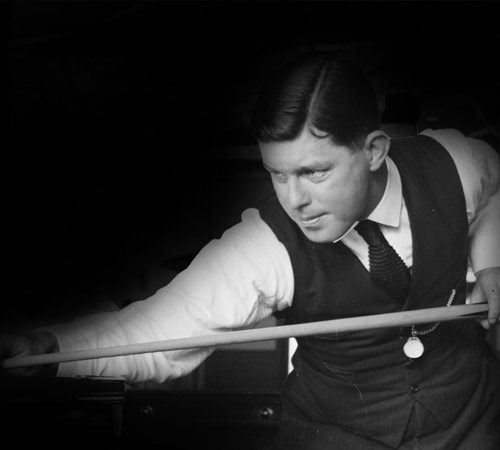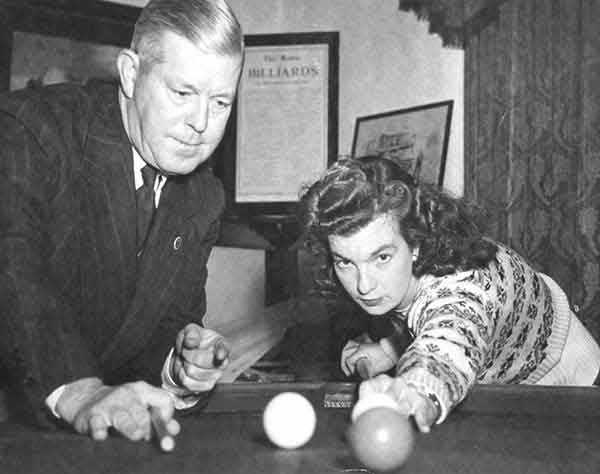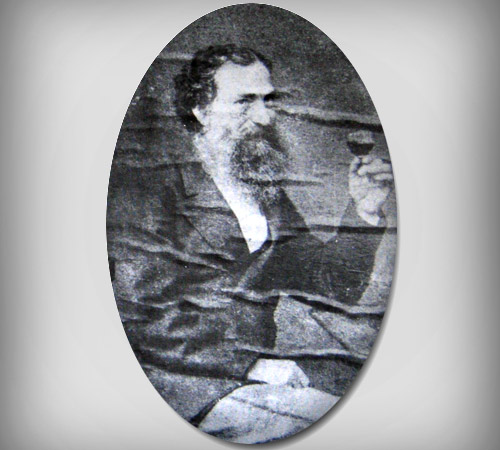
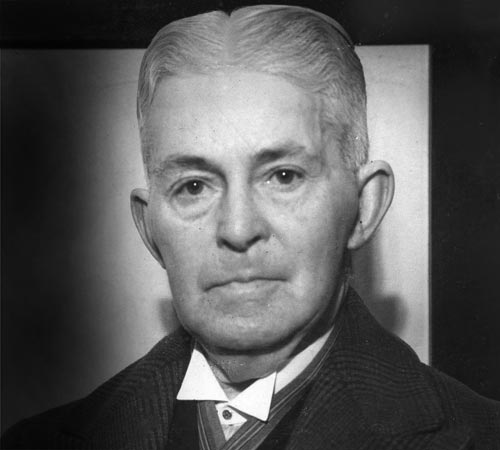
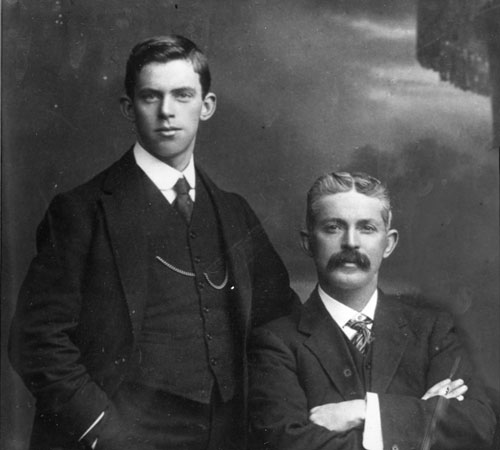
The Inheritance
Lindrum's grandfather
Frederick William Lindrum (Fred I), born Frederick Vilhelm von Lindrum in Prussia (view the naturalization paper here), is believed to have settled in Adelaide in 1838 after arriving via England. He was a skilled billiardist. On 17 September 1865, the day his son (Fred II) was born, he defeated the visiting "world champion", John Roberts senior. In 1872, Fred I became a hotel-keeper, running the Clarence Hotel in Adelaide, which had a billiards room. A masterful wine-maker, he won numerous awards for colonial wines at the 1873 London International Exhibition.
Lindrum's father
Frederick William Lindrum II (Fred senior) played billiards in his childhood, losing his father at 14. H. A. Albers, an outstanding billiards player residing in Adelaide, soon spotted Fred II's talent for billiards, and started to coach and support him. Albers installed a custom-designed table in Fred's bedroom specifically for spot-stroke training. It's fair to say that without Albers' guidance and generosity to Fred II, the Lindrum name would never have dominated the sport of billiards.
In 1886, Fred II moved to Melbourne and won the native-born Australian championship against Harry Gray the next year.
According to Walter, his father was the greatest billiard player in the world from 1909 to 1912, but this was known only by him and his brother Fred junior since his father passed over public matches to coach the two of them.
Lindrum's older brother
Frederick William Lindrum III (Fred Junior) was born in 1888, 10 years older than Walter Lindrum, and was destined to succeed in billiards under his father's watchful eye. Fred senior's radical coaching methods included converting Fred junior to a right-handed player at an early age, which made coaching and learning more convenient, since both were left-handed. This reflects Fred senior's unwavering commitment to developing his son into a world billiards champion.
Fred Junior won tournaments in 1904 and 1905, and became the Western Australian champion in 1906. He won the Australian title in Sydney in 1908.
His career peaked in 1911, when he made breaks of 830, 840, and 1239 in a match against English professional Tom Reece - the last being an Australian record.
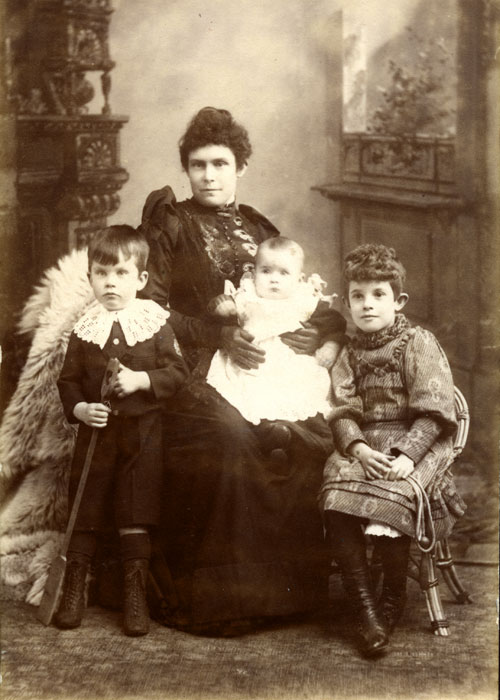
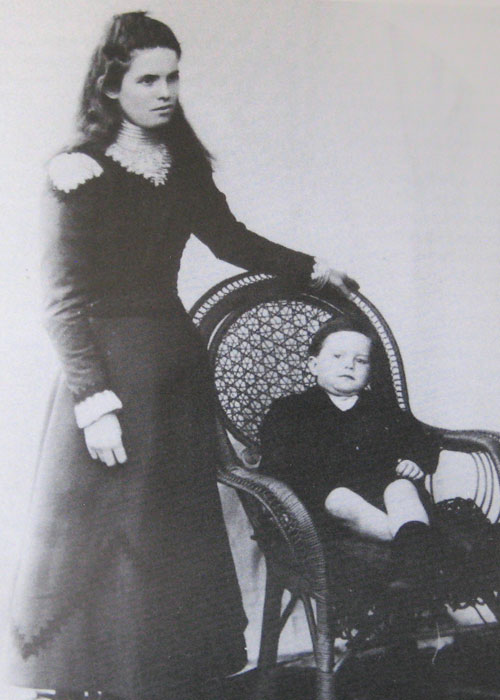
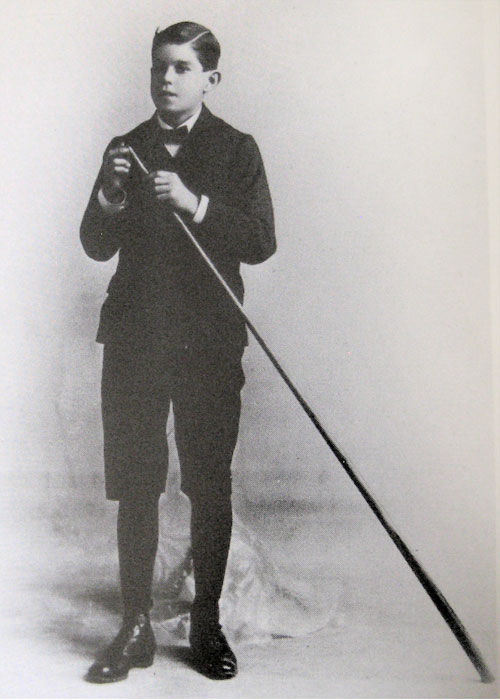
1898 (early childhood)
Walter Lindrum was born on 29 August 1898 in the Western Australian mining town of Kalgoorlie. His eventual godfather Wallace Brownlow suggested that, due to Walter being the first Lindrum to be born in Western Australia, his initials would have to be "W.A."; thus, he was christened 'Walter Albert'. He was often referred to as Wally.
He survived several accidents in his childhood. At age 3, he lost the tip of his right index finger, which led to his father teaching him to play billiards left-handed. He also defeated a bout of pneumonia after being given hours to live by a doctor and escaped a tree falling close to his bed during a storm.
Walter started his intense training regimen at 8 years old, under Fred senior's tutelage, which involved strict coaching and demanding training routines. These benefits accumulated over Walter's career, and many years later, he reaped the rewards of his father's mentoring.
Walter had a great passion for cricket in his early days, making many centuries while representing his school, and often spent his time playing the sport when away from the billiards table. Fred senior insisted he choose between billiards and cricket, reasoning that billiards required a sensitive touch; Walter's fingertips would often tingle from fielding cricket balls, potentially impeding his level of billiards play.
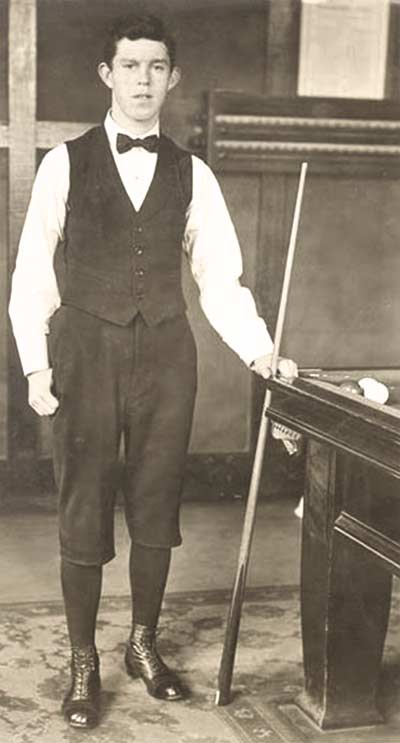
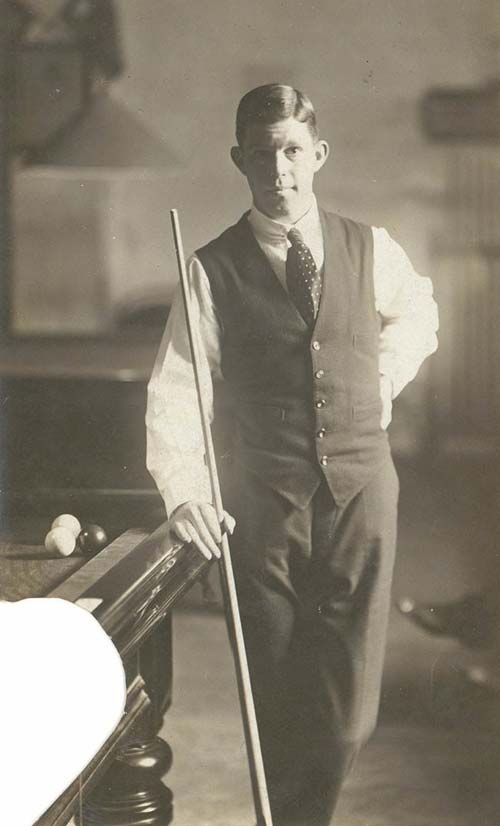
1912-1916
Young Walter Lindrum became a professional billiards player shortly after leaving school in 1912, playing his first professional match at the age of only 13 years old. In 1913–14, at age 15, Walter went on his first professional tour with Miss Ruby Roberts, the world's lady champion and niece of the Australian billiards champion Charles Memmott.
Lindrum made two unsuccessful challenges for the championship of Australia against his brother in 1915 and 1916.
At 17, Lindrum won all three matches against the visiting young New Zealand champion, Clark McConachy, who just turned 21. He also recorded his first win in public over his brother Fred junior. After this, Walter never issued any challenges for the Australian Championship. Fred junior retained the title until Horace Lindrum (his nephew) won the challenge in 1934.
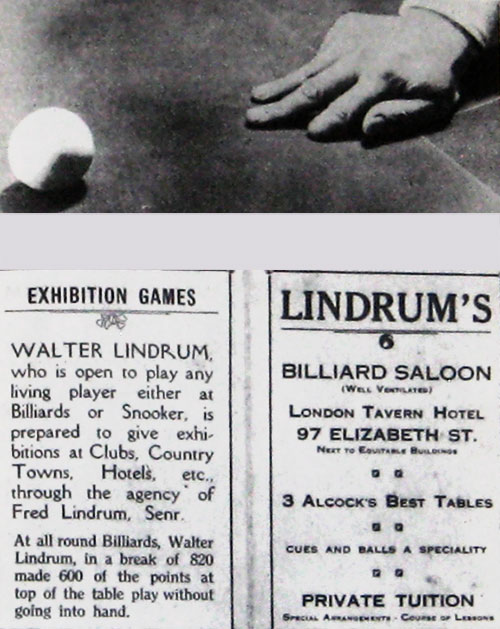
1917-1921
By age 18, Walter Lindrum had no rivals domestically. With the War preventing him from travelling to England and competing against their professionals, he went on a billiards hiatus. In his time away from competitive billiards, he explored other interests such as horse racing, helped run the family billiards room, gave private lessons, and played exhibition matches with his brother.
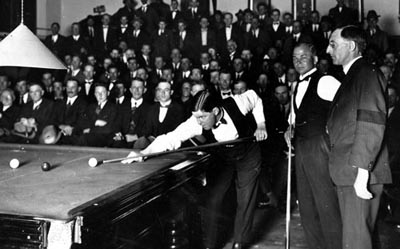
1922-1925
1922
In 1922, Walter Lindrum defeated highly regarded ex-professional champion Harry Stevenson by a massive 9,457-point margin in Sydney.
1925
At Perth Town Hall, Lindrum set up an Australian record break of 1,879 against Claude Falkiner, whose skill with the nursery cannon was greatly renowned. Walter admitted he had received many tips from Falkiner on this aspect of the game.
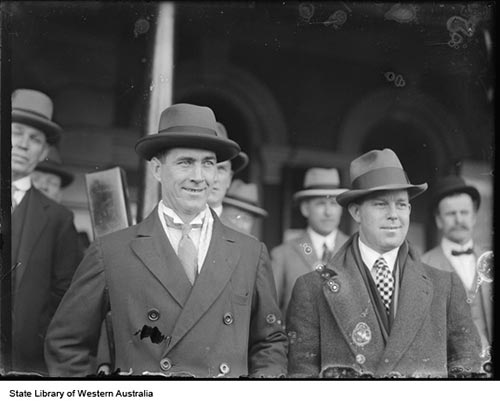
1927-1928
Lindrum continued playing exhibition matches against McConachy, making many four-figure breaks. In June 1927, he claimed a world speed record when, at Melbourne, he made an unfinished break of 816 in 23 minutes. In 1928, he embarked on his first overseas tour in New Zealand with McConachy, where he set a record break of 1,475.
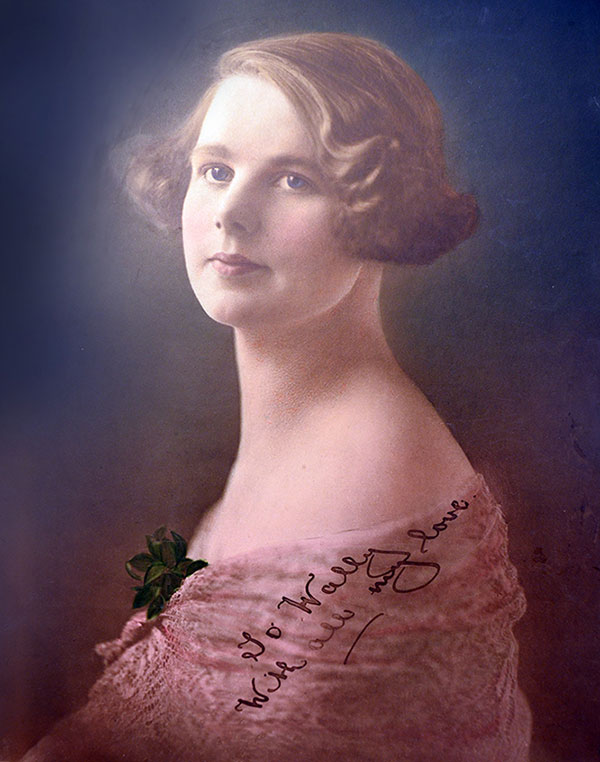
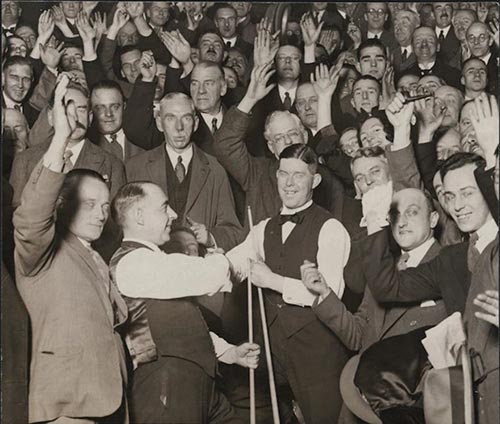
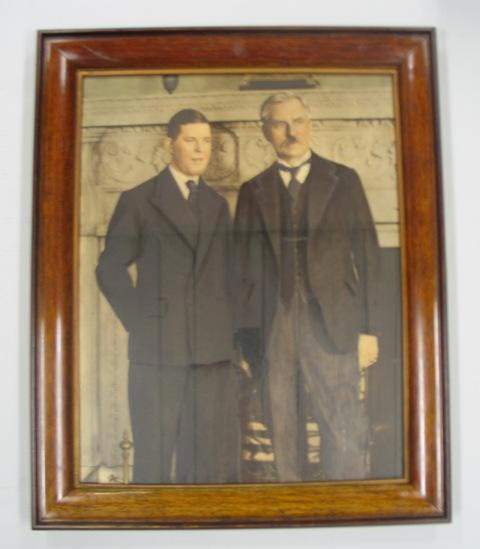
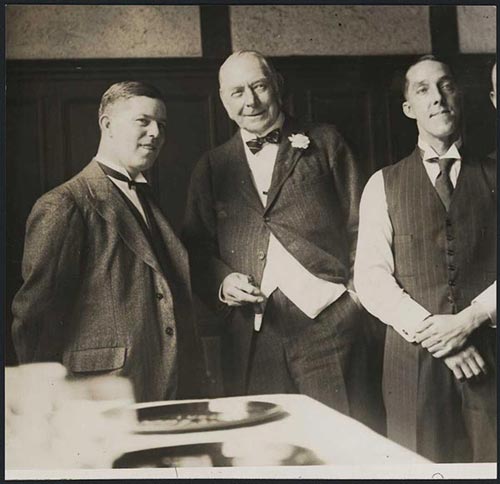
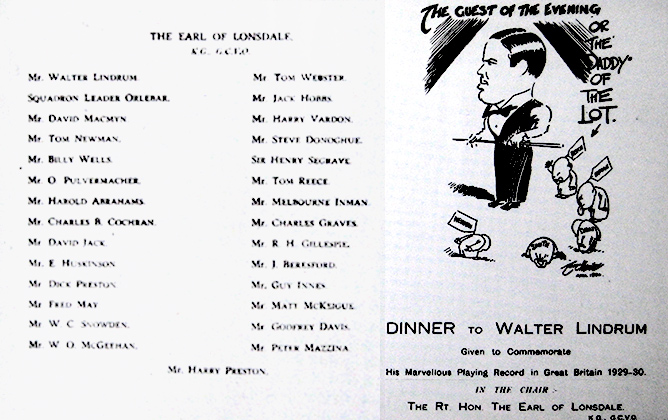
1929-1930
1929 (Melbourne & Sydney)
The first historic meeting between Walter Lindrum and the leading English professional, Willie Smith, took place in Melbourne. Lindrum won the first leg by 24,234-22,147, but Smith levelled the match by winning the second leg by 23,446-22,317 (YMCA Hall, Sydney). Tragically, the deciding leg (YMCA Hall, Sydney) was abandoned due to Lindrum's girlfriend Rosie falling seriously ill. Walter married her by her bedside at the hospital on 23 August 1929, but she passed away a few hours later. Smith refused to accept the trophy, insisting that it be awarded to Lindrum. The match scores at the time it was abandoned were Lindrum 21,431 and Smith 19,308.
1929 (first English season)
Walter Lindrum established himself as history's best billiard player when he made a world-record break of 3,262 against Willie Smith.
Lindrum not only played the game brilliantly but also with honour. In a match against McConachy at the Memorial Hall, London, in February 1930, he detected a thousand-point error in his favour and alerted the referee to credit a thousand points to McConachy.
1930
Lindrum continued to compile his thousand breaks and aggregate scores in London. In his final match against Smith, Lindrum's devastating dominance set numerous records: the highest individual aggregate (36,256), the largest winning margin (21,285), a record match average (262), and a record number of four-figure breaks (11).
Walter Lindrum was invited to meet with British Prime Minister Ramsey MacDonald and Irish President Cosgrave. He spoke highly of their hospitality.
Lindrum concluded his first English tour by being a guest of honour at a celebratory dinner commemorating his performances, which was chaired by the Earl of Lonsdale (Hugh Lowther). Sporting dignitaries in attendance included cricketer Jack Hobbs, regarded by many as the greatest English batsman ever, and cyclist Steve Donoghue, who won six English Derbies.
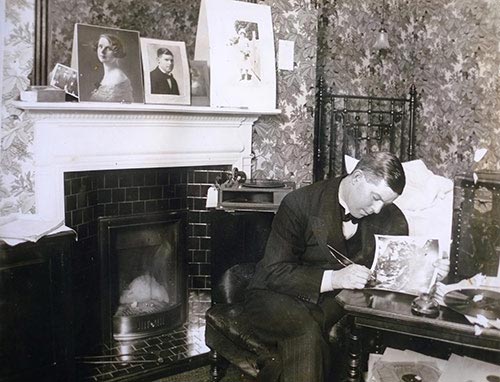
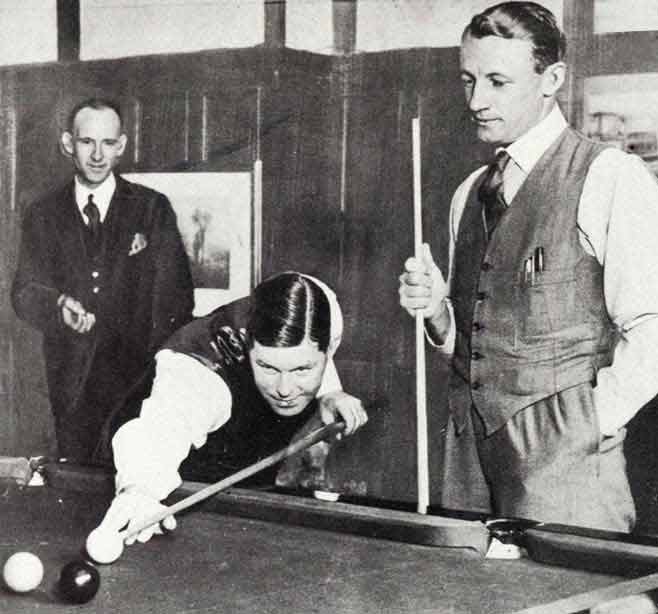
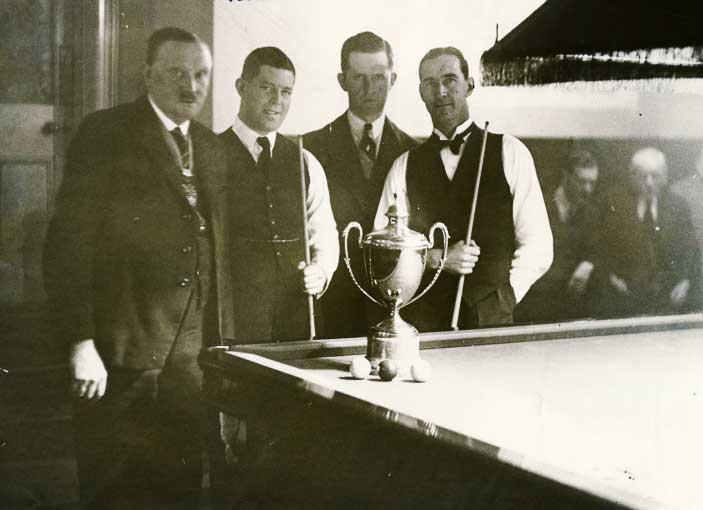
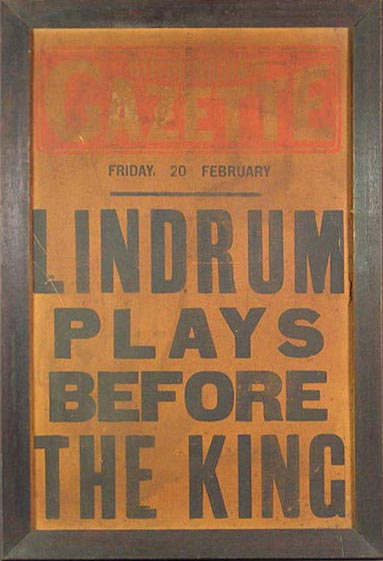
1930-1931
1930 (second English season)
When travelling by train on his return to England, Lindrum lost three teeth, due to his gramophone slipping from an overhead rack, which was followed by a suitcase that hit his face. The gramophone carried great emotional value to Walter, and he brought it with him on his early tours. It played a song called "Goodnight Sweetheart", which reminded him of his time with Rosie.
Lindrum played a warm-up match against Falkiner, conceding an 8,000-point start, and won by 28,799 to 19,523 despite the injury. Australian cricket great Don Bradman attended the match on 19 September, having set a record inning of 334 two months prior.
1931 (the Gold Cup Tourney)
The major event of this season was the International Gold Cup Tourney, in which Walter Lindrum conceded a 7,000-point start to each opponent. He defeated Tom Newman in the final with a mammoth chase to win the Gold Cup by 25,807 to 24,436, during which a remarkable phase of play saw Lindrum make two 2,000+ breaks in four visits to the table, scoring 7,665 points at an average of 1,916 points per visit. Walter credited a photo of his beloved Rosie as a source of inspiration for him to raise his level of play after being out of form for the first few days of the match.
Soon after his monumental victory, Lindrum was summoned to give a performance for King George V and Queen Mary. The King had closely followed Lindrum's performances in the tourney, memorising his averages and aggregate scores, and was entertained by Lindrum's prowess in the nursery cannon, while the Queen was enthralled by Walter's repertoire of trick shots. Walter was then gifted a token of appreciation by the King: a pair of gold and enamel cuff links bearing the King's monogram. He proudly wore those cufflinks on important occasions for the rest of his life.
Lindrum published his first book, Billiards, in 1930, which was reprinted in a fifth edition in 1976.
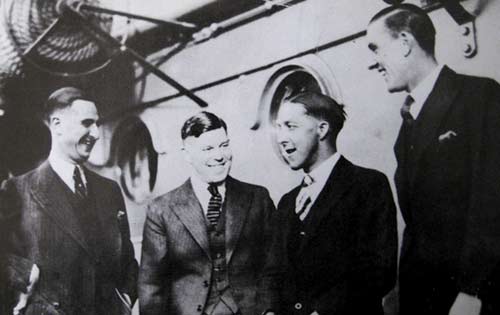
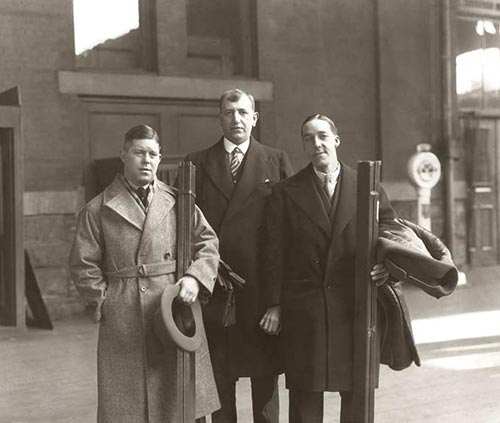
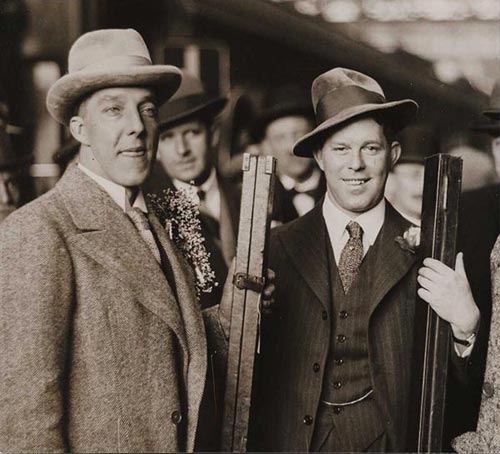
1931-1932
Lindrum and Newman commenced their Australian tour in Sydney. Spectator interest in billiards declined due to the Depression and the increased use of nursery cannons, which lacked excitement for the average spectator.
Lindrum played a match with Joe Davis in London, where he made the world-record break of 4,137. Approximately two-thirds of the break was constructed using cannon sequences. Despite this, he lost the match by 1,251 points after giving Davis a 7,000-point start.
Lindrum was to miss the championship in his third English season, which he spent mostly on a North American exhibition tour in Canada and the USA with Tom Newman. The tour made a financial loss due to a lack of sponsorships and a disappointing turnout.
The nursery cannon problem escalated, with McConachy exploiting them in match play. It prompted the Billiards Association and Control Council (B.A. & C.C.) to make necessary rule changes and prevent the game's downfall.
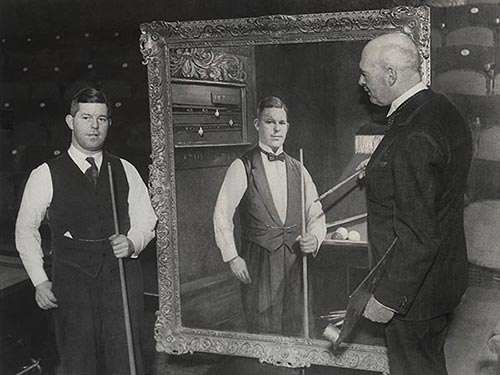
1932-1933
In Lindrum's fourth and final English season, the B.A. & C.C. trialled the baulk-line rule, where the cue ball must cross it at least once every 100 points in a break. Walter gave the new rule a fair try but had issues adapting to it. The baulk-line rule was shortly amended to require a crossing once every 200 points, owing to the unified opposition from the "Big Four" (Lindrum, Davis, Newman, and McConachy).
The baulk-line rule affected Lindrum's scoring ability. Giving starts of 6,000 points to all his opponents, while subject to the new rule, proved beyond Lindrum's abilities; he failed to win the 1933 Gold Cup Tourney. However, Walter Lindrum would have won all his matches in the 1932-1933 English season on level terms.
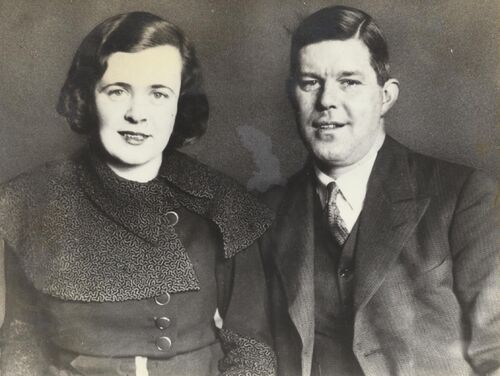
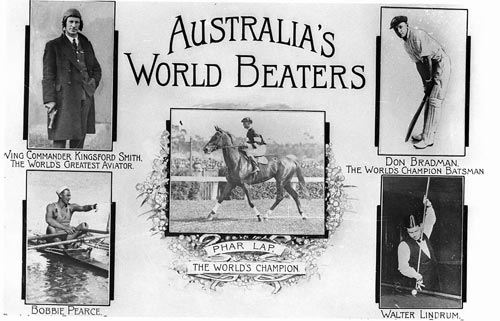
1933
In April 1933, amidst the heavy match schedule, Lindrum married his secretary, Alice "Patricia" Hoskin (27), in London. Patricia was born in Violet Town, Victoria, Australia.
After countless hours of practice acclimatising to the new rules, Lindrum mastered the baulk-line rule and won the World Championship, defeating Davis by a close 694-point margin in the final after a gigantic struggle.
On the way home to Melbourne, Lindrum and his wife were accompanied by Mr. and Mrs. McConachy on his visits to South Africa and India to perform exhibition matches. He registered a new world record for fast scoring when he compiled 1,000 points in 28 minutes in Johannesburg.
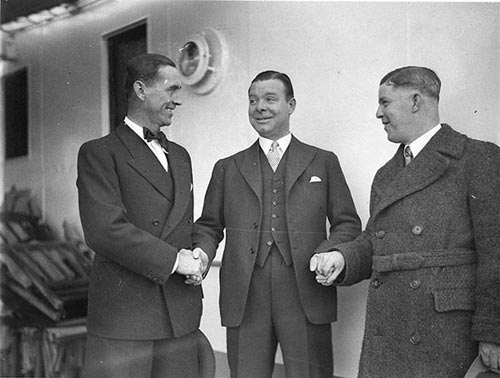
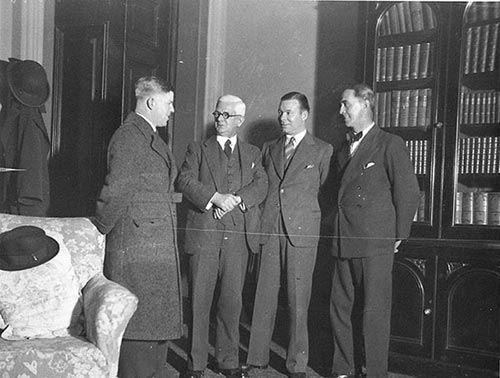

1934
After heated negotiations, the B.A. & C.C. agreed to Lindrum's demand that Australia would host the 1934 World Championship, the first to be played outside England, and was organised by the Australian Amateur Billiards Council (AABC) to coincide with Melbourne's Centenary celebrations.
The championship was held at the Railways Institute Building in Flinders Street, Melbourne. The Governor of Victoria, Lord Huntingfield, performed the official opening ceremony on September 24, while Prime Minister Lyons opened the final on October 15, at the invitation of Captain Alfred Treacy OBE, the President of the AABC. Walter Lindrum successfully defended his world championship title on home soil against Joe Davis and Clark McConachy, winning by a close margin of 875 points in the final against Joe Davis.
Read more on Paymaster Captain Alfred Martin Treacy OBE, the President of AABC.
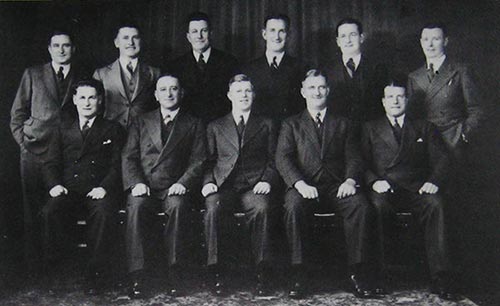

1935-1949
Walter Lindrum quickly became involved with fundraising efforts for the war, refusing to be paid for his services. His first fundraising effort was with the Racing Patriotic Appeal Fund. Lindrum played exhibition matches with ten leading Victorian amateurs, including future world champion Tom Cleary.
Lindrum performed endless exhibitions in every mainland state, including visiting military camps to entertain the troops for as long as 12 hours at a time. During WWII, he performed around 4,000 exhibition matches, raising funds for the war effort in addition to the proceeds from his book Billiards. The heavy schedule greatly impacted his health and contributed to his marriage breakdown.
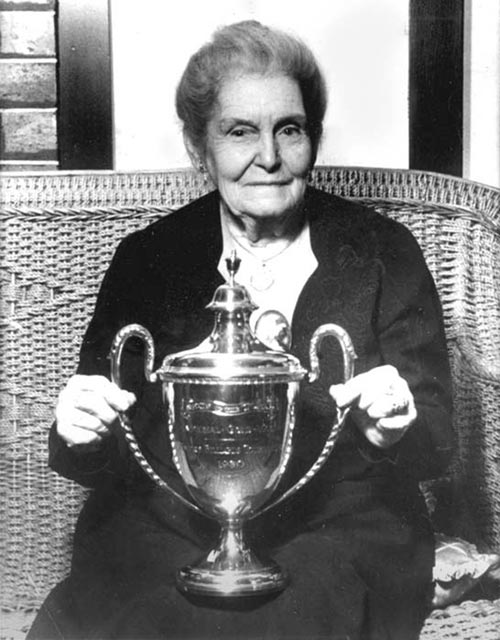
1950-1956
In 1950, McConachy challenged Lindrum for his world billiards title. Lindrum declined, having already achieved all in the game and lacking in the training required for a championship match. He subsequently retired in July and forwarded the championship trophy to the B.A. & C.C.
Walter Lindrum's mother, Harriet, passed away in 1951 at the great age of 86. Walter dearly attributes his passion for the sport and the desire to win to her.
In April 1954, Walter Lindrum (54), was granted a divorce from his wife Alicia (47). He married for the third time in July 1956 to Beryl Russell.
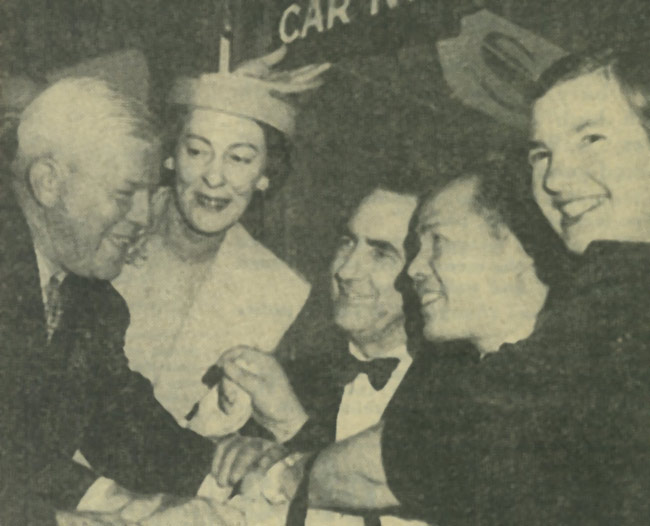
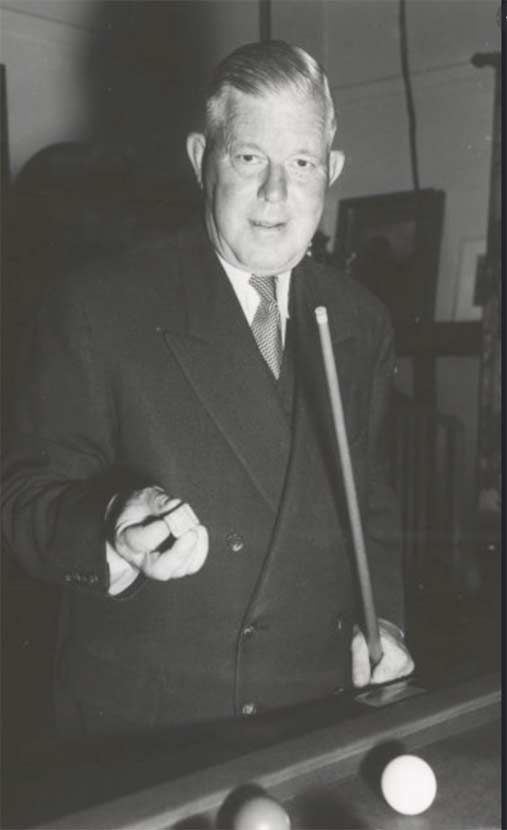
1957
With financial backing from the Federal Government, Walter Lindrum embarked on a goodwill tour of South-East Asia, covering Singapore, Malaysia, Hong Kong, and Taiwan, with funds raised to be donated to charities in those countries in the hope of helping more Asians study in Australia. One highlight of the tour was 7,500 schoolchildren attending a Taiwan exhibition.
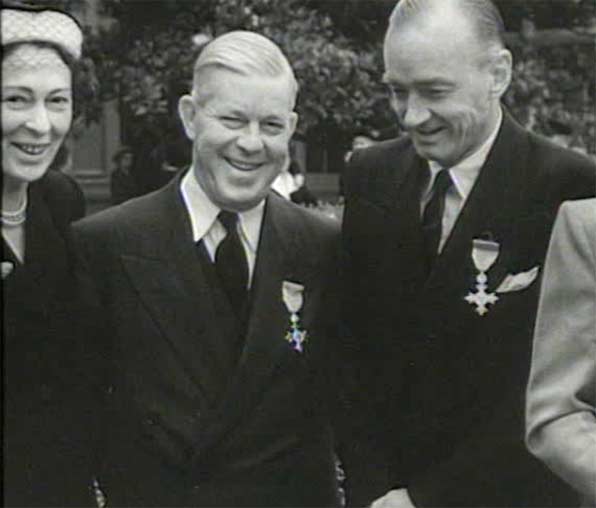
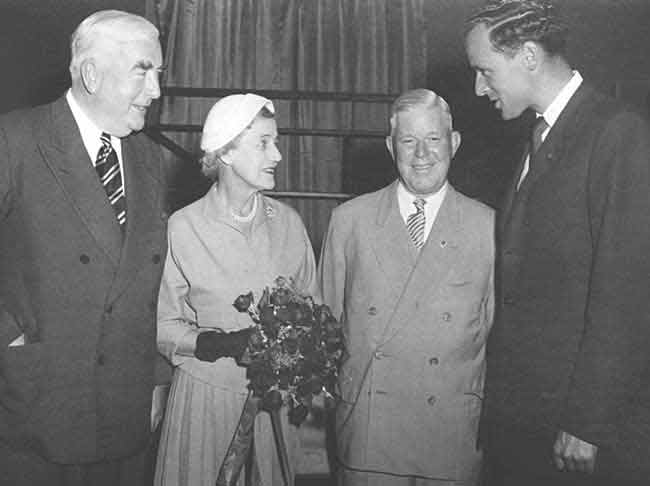
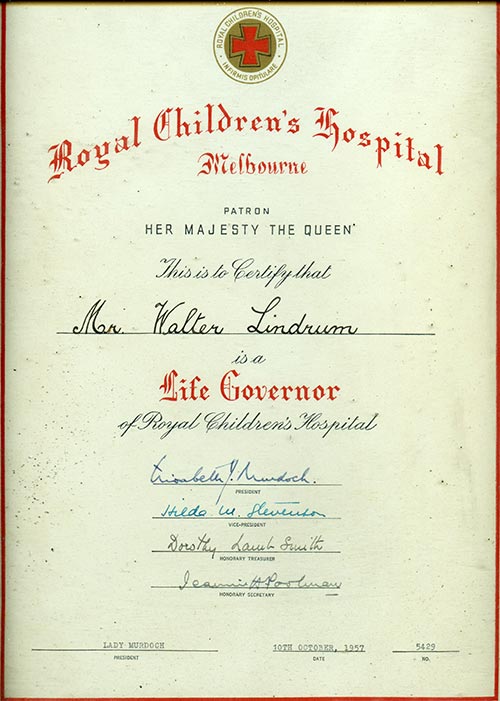
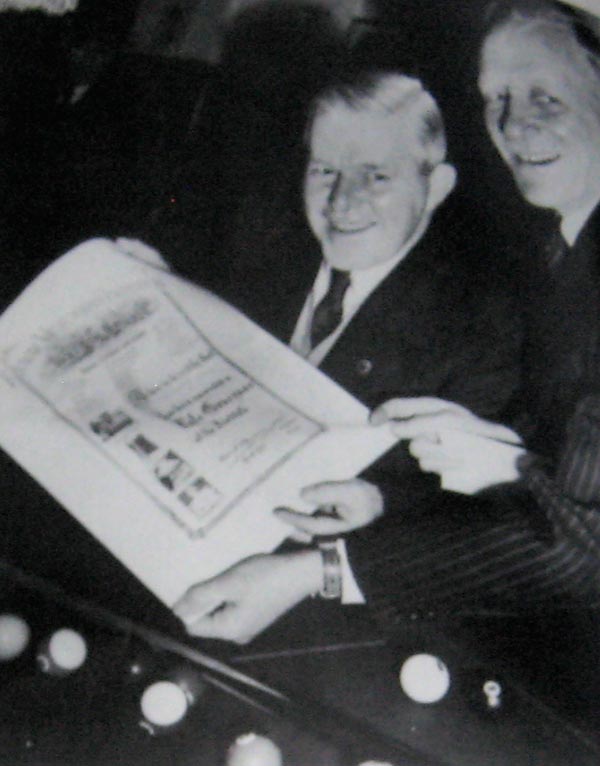
1958
Along with his M.B.E. in 1951, Walter Lindrum was appointed O.B.E. in the 1958 New Year Honours List for his contributions to charitable causes. He raised over £2 million for charity in his lifetime.
Lindrum was awarded many other honours, including the life governorships of the Royal Children's Hospital, St. Vincent's Hospital, Alfred Hospital, and the Royal Victorian Institute for the Blind.
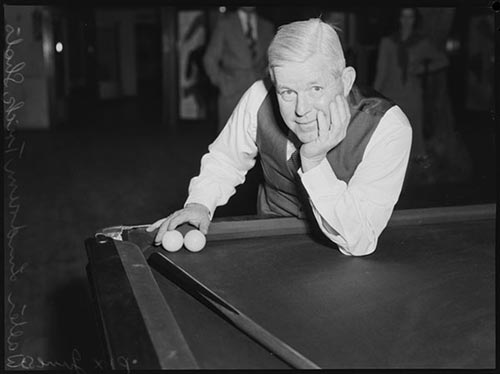
1960
Walter Lindrum passed away on 30 July 1960, aged 61, while on holiday with his wife in Surfers Paradise, Queensland. The cause of death was listed as heart failure. On 2 August 1960, he was given a state funeral at St. Paul's Cathedral in Melbourne, which was attended by over 1,500 people.
Lindrum was buried at Melbourne General Cemetery. A distinctive monument consisting of a marble billiards table, a brass cue, and balls was erected in memory of Walter Lindrum thanks to the champion cyclist, Sir Hubert Opperman, who raised the funds.
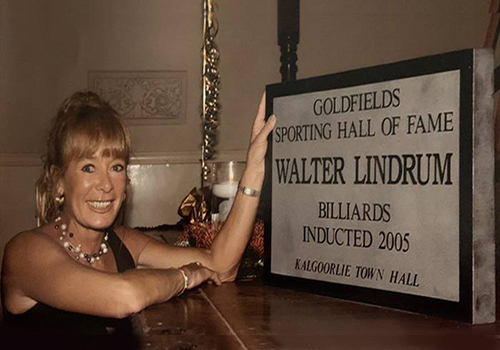
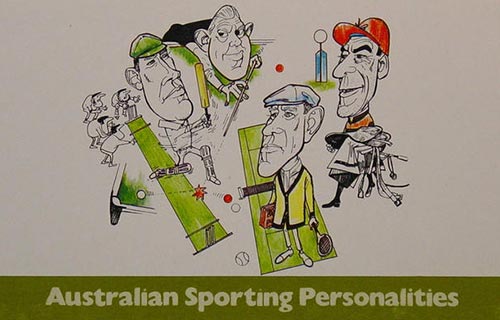
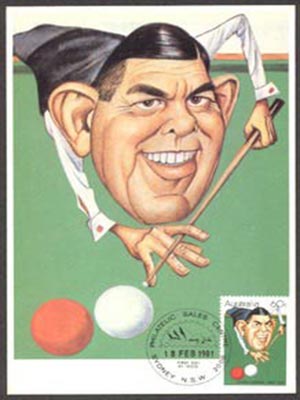
1980s
Lindrum was featured on the 1981 Australian 60-cent postage stamp and was inducted into the Sport Australia Hall of Fame and the Western Australia Sporting Hall of Champions in 1985, as well as being an inductee of the Goldfields Sporting Hall of Fame in 2005. His house in Albert Park, Melbourne, is acknowledged by the Port Phillip Council for its historical association with him. Walter Lindrum is widely regarded as one of the greatest Australian sporting heroes of all time.
References
Book
- Ricketts, A. (1982) Walter Lindrum: Billiards Phenomenon. 1st edn. Manuka, A.C.T.: Brian Clouston.
Articles
- 1913 'BILLIARDS.', The Age (Melbourne, Vic. : 1854 - 1954), 7 February, p. 10. , viewed 13 Mar 2023, http://nla.gov.au/nla.news-article201138884
- 1930 'W. LINDRUM BACK FROM TRIUMPHANT TOUR', The Mail (Adelaide, SA : 1912 - 1954), 10 May, p. 1. , viewed 10 Mar 2023, http://nla.gov.au/nla.news-article63656441
- 1933 'WALTER LINDRUM.', Cairns Post (Qld. : 1909 - 1954), 11 April, p. 3. , viewed 11 Mar 2023, http://nla.gov.au/nla.news-article41207844
- 1934 'BILLIARDS.', The Sydney Morning Herald (NSW : 1842 - 1954), 29 October, p. 6. , viewed 11 Mar 2023, http://nla.gov.au/nla.news-article17131252
- 1934 'BILLIARDS FINAL', The Argus (Melbourne, Vic. : 1848 - 1957), 15 October, p. 7. , viewed 11 Mar 2023, http://nla.gov.au/nla.news-article10988471
- 1934 'NEW BILLIARDS CHAMPION', The Argus (Melbourne, Vic. : 1848 - 1957), 26 November, p. 7. , viewed 22 Mar 2023, http://nla.gov.au/nla.news-article10996235
- 1951 'DEATH OF MRS. HARRIETT LINDRUM', Record (Emerald Hill, Vic. : 1881 - 1954), 3 November, p. 6. , viewed 10 Mar 2023, http://nla.gov.au/nla.news-article164504011
- 1954 'Divorce For Lindrum', Townsville Daily Bulletin (Qld. : 1907 - 1954), 3 April, p. 3. , viewed 10 Mar 2023, http://nla.gov.au/nla.news-article62508150
- Ainsworth, P. (2013) Walter Albert Lindrum: His Life and Times, EABA. Available at: https://www.eaba.co.uk/?p=5787 (Accessed: March 11, 2023).
- Alicia Tryphena (Hoskin) Lindrum (2021) WikiTree. Available at: https://www.wikitree.com/wiki/Hoskin-889 (Accessed: March 11, 2023).
- (no date) Trove. Available at: https://nla.gov.au/nla.party-615352 (Accessed: March 13, 2023).
- Baum, G. (2010) The lindrum legacy, The Sydney Morning Herald. The Sydney Morning Herald. Available at: https://www.smh.com.au/sport/the-lindrum-legacy-20100813-12391.html (Accessed: March 13, 2023).
- Jones, E. (1986) Lindrum, Walter Albert (1898–1960), Biography - Walter Albert Lindrum. Available at: https://adb.anu.edu.au/biography/lindrum-walter-albert-7755 (Accessed: March 13, 2023).
- Walter Albert Lindrum OBE AM (2023) WikiTree. Available at: https://www.wikitree.com/wiki/Lindrum-3 (Accessed: March 13, 2023).
- Walter Lindrum (2022) Wikipedia. Wikimedia Foundation. Available at: https://en.wikipedia.org/wiki/Walter_Lindrum (Accessed: March 12, 2023).
- Walter Lindrum (no date) Sport Australia Hall of Fame. Available at: https://sahof.org.au/hall-of-fame-member/walter-lindrum/ (Accessed: March 13, 2023).
- Walter Lindrum (no date) Wikiwand. Available at: https://www.wikiwand.com/en/Walter_Lindrum (Accessed: March 13, 2023).
Images
- A montage: "Australian's World Beaters", Charles Kingford Smith, Don Bradman, Bobby Pearce, Walter Lindrum, with "Phar Lap" as centre piece. State Library of New South Wales. Available at: https://collection.sl.nsw.gov.au/record/1xqLLoGY/ByyMxA230BQZB (Accessed: March 11, 2023).
- Billiards champions Walter Lindrum and Joe Davis with supporters. New Zealand Free Lance : Photographic prints and negatives. Ref: PAColl-0785-1-220-03. Alexander Turnbull Library, Wellington, New Zealand. /records/22694593
- Billiards players Walter Lindrum and Tom Newman with Lord Lonsdale. New Zealand Free Lance : Photographic prints and negatives. Ref: PAColl-0785-1-220-02. Alexander Turnbull Library, Wellington, New Zealand. /records/22688999
- Billiards players Tom Newman and Walter Lindrum. New Zealand Free Lance : Photographic prints and negatives. Ref: PAColl-0785-1-220-01. Alexander Turnbull Library, Wellington, New Zealand. /records/23210710
- Edwards, Don. & Australian News and Information Bureau. 1957, Walter Lindrum, practising for his forthcoming billiards tour of seven South-East Asian countries, at his home in Melbourne, 1957 [picture] / Australian News and Information Bureau photograph by Don Edwards <http://nla.gov.au/nla.obj-137925700>
- Fairfax Corporation. 1929, Billiard player Walter Lindrum playing in the Elite Billiard Hall, New South Wales, ca. 1929 , viewed 9 March 2023 http://nla.gov.au/nla.obj-162892547
- Hand coloured photograph of Walter Lindrum & Ramsay MacDonald, c1930 (no date). Available at: https://collection.australiansportsmuseum.org.au/objects/40883/hand-coloured-photograph-of-walter-lindrum-ramsay-macdonald-c1930 (Accessed: March 12, 2023).
- HRRC 1928, Clark McConachy (left) and Walter Lindrum, champion billiards players.
- slwa.wa.gov.au. 2023. No page title. Available at: https://slwa.wa.gov.au/images/pd047/047809PD.jpg (Accessed: March 13, 2023).
- Lord Mayor of Sydney, Alderman Parker, welcomes the three men who had arrived by RMS "Orsova" - Walter Lindrum, world champion billiard player, on left, with Joe Davis, second from right and Clark McConachy on right. State Library of New South Wales. Available at: https://collection.sl.nsw.gov.au/record/1wNOevPn/qDlEpv8xrwQNZ (Accessed: March 11, 2023).
- Patricia and Walter Lindrum (no date) WikiTree. Available at: https://www.wikitree.com/photo/jpg/Hoskin-889 (Accessed: March 11, 2023).
- Poster for Birmingham Gazette, "Lindrum plays before the king" c1930 (no date) Australian Sports Museum Collection Online. Available at: https://collection.australiansportsmuseum.org.au/objects/41466/poster-for-birmingham-gazette-lindrum-plays-before-the-king-c1930 (Accessed: March 13, 2023).
- Stamp booklet 'Australian sports personalities' designer Tony Rafty c. 1981 (no date) Australian Sports Museum Collection Online. Available at: https://collection.australiansportsmuseum.org.au/objects/58842/stamp-booklet-australian-sports-personalities-designer-tony-rafty-c-1981 (Accessed: March 13, 2023).
- Thurston & Co (no date) Billiard and Snooker Heritage Collection - Thurston & Co. Available at: https://www.snookerheritage.co.uk/company-histories/thurston-co/ (Accessed: March 12, 2023).
- Walter Lindrum, 15 years old. State Library of New South Wales. Available at: https://collection.sl.nsw.gov.au/record/93QpWlx1/NoNjP72vMKVV3 (Accessed: March 11, 2023).
- Walter Lindrum,right, with Clark McConachy (NZ) left and Joe Davis (Eng) centre,arrive by Orient line ship "Orsova". State Library of New South Wales. Available at: https://collection.sl.nsw.gov.au/record/YRlDpjdn/22aZmMOj4WWo6 (Accessed: March 11, 2023).
- Walter Lindrum. State Library of New South Wales. Available at: https://collection.sl.nsw.gov.au/record/93QpWlx1/Re0vR8wzxVqNq (Accessed: March 11, 2023).
- Willie Smith congratulating Walter Lindrum - Photograph taken by Fox Photos London. New Zealand Free Lance : Photographic prints and negatives. Ref: PAColl-0785-1-220-05. Alexander Turnbull Library, Wellington, New Zealand. /records/23052721


